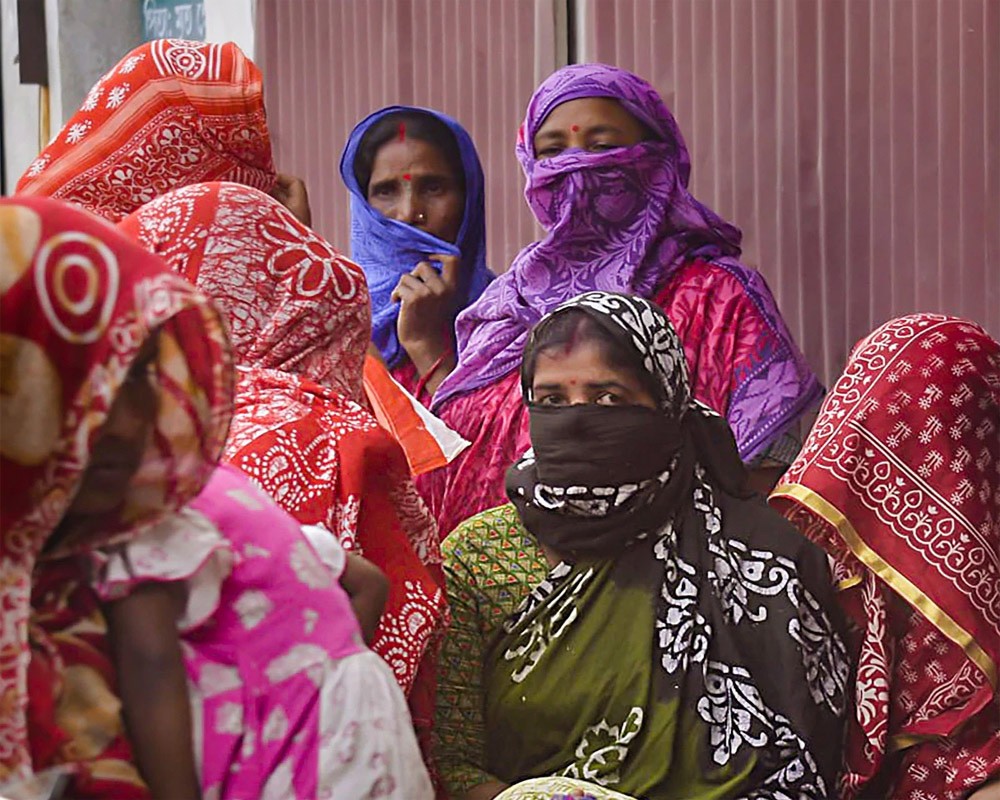West Bengal is again in the news and again for the wrong reasons. The premises of the venerable Ramakrishna Mission at Jalpaiguri have been vandalised by the goons of the State’s ruling Trinamool Congress (TMC)
 KRC TIMES Desk
KRC TIMES Desk

Prafull Goradia
West Bengal is again in the news and again for the wrong reasons. The premises of the venerable Ramakrishna Mission at Jalpaiguri have been vandalised by the goons of the State’s ruling Trinamool Congress (TMC). That hasn’t been the only incident of attacking a religious or spiritual centre. The ISKCON temple premises in the State have also been the target of the TMC brigade, as the State’s chief minister Mamata Banerjee suspects the organisation’s monks of being BJP sympathisers. So too have the premises of the Bharat Sevashram Sangh (BSS) at Beldanga in the district of Murshidabad suffered the ire of the ruling party’s roughnecks. One of the BSS monks Kartik Maharaj has drawn Mamata Banerjee’s ire as he is thought to be working towards influencing voters in favour of the BJP. Banerjee also believes that the ISKCON is playing a similar role.
The Ramakrishna Mission or RKM, as it is also known, headquartered in Kolkata’s Belur Math was founded in 1897, by the great spiritual Ramakrishna Paramahansa’s most renowned disciple, Swami Vivekananda. The latter was truly a global icon of modern Hinduism and planted the flag of Sanatana Dharma in the West, beginning with his spiritual conquest in Chicago in 1893 at a conference of the World Parliament of Religions. Though the International Society for Krishna Consciousness (ISKCON) was founded in New York, its founder Bhaktivedanta Swami Prabhupada or Srila Prabhupada was born in Calcutta and ventured to the US only in his old age, at 69, to spread the message of Krishna to America and the rest of the world. To vandalise such highly regarded institutions such as the venerable Ramakrishna Ashram and the internationally respected ISKCON, which has over 160 temples across the globe and that too by some citizens of a country that is predominantly Hindu, is unthinkable and unpardonable. It is possible that the perpetrators of these attacks are not Hindus but people belonging to another religion. Nevertheless, the message that comes out from these recent episodes of temple vandalism is of the Hindus as a people being religious-suicidal.
This is all the more unfortunate for two reasons. The Ramakrishna Mission is world famous since it was Swami Vivekananda who single-handedly informed the world of the wonder that Hinduism is. It is ISKCON that enables so many countries, with its magnificent temples, to worship in the Hindu way of “Hare Rama, Hare Krishna”.
Secondly, it has been only a few years since the image of Hindu India began to shine, after centuries of suppression. We now have the sordid spectacle of temple and ashram premises being attacked by goons with guns, in West Bengal of all places. It was just over a century ago that Congress leader Gopal Krishna Gokhale had said, “What Bengal thinks today, India thinks tomorrow”. It signified the province of Bengal was a leader. Is this what leaders do and that too for winning some seats in four or five constituencies?
Just look back at the Renaissance, which in many ways, was comprehensively led by Bengal. But before that, let us not forget Chaitanya Mahaprabhu, who is considered by many to have been an avatar of Krishna. Chaitanya saved at least a part of Bengal for Bharat; but for him, the whole of the province would have been swallowed by Pakistan and then ruined. He stood between the conversion of the poorer Bengalis to Islam and saving them so that today they can worship Krishna. Ramakrishna Paramahansa was also a divine gift of Bengal, who himself had a glimpse of the divine.
One could go on and on about Bengal’s contributions to the country. Modern India’s greatest poet was Rabindranath Tagore, again, a gift of Bengal. His lyrics are today are national anthem. One cannot ever forget Bankim Chandra Chattopadhyay and his stirring song Vande Mataram, which became the freedom anthem of India’s national movement and inspired countless revolutionaries to armed action for combating the colonial raj, as well as to embrace the gallows in their supremely inspired quest. Bengal is a virtual encyclopaedia of the 19th and 20th-century, greats of India.
It would need an entire volume to describe how and when the saga began to sour. From the climbing of lofty heights of art, culture, literature and industry, Bengal began to slip towards an existence that wouldn’t be envied in the least.
The late Nirad Chaudhari, one of the finest writers the English language world has seen, gave vent to this angst by saying that the people of his are the “finest virtuosi of factiousness”, not a flattering comment, though this writer, having being raised in Bengal and able to speak fluent Bengali, is wont to take a much more positive view.
The sense of being Bengali is of course very pronounced, but the unity a common language can foster cannot stand before the pull of religion, as has been the historical experience throughout most significant parts of the world. That the State that led India’s renaissance in the 19th century has fallen into this travesty is a sad tale, but Bengal has been known to come back strongly towards nationalism every time it is felt that the province might have gone astray. Perhaps therein lies the silver lining.
(The writer is a well-known columnist, an author and a former member of the Rajya Sabha; views are personal)
Promotional | Subscribe KRC TIMES e-copy






